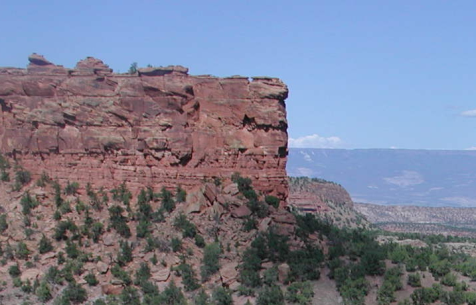The Media "Mesa"
Media is a Mesa, Not A Mountaintop
The popular image of an optimization is a climb to the very peak of a mountain. In reality, that image is misleading: No real media planning effort is going to have a single, undebatable “best” solution! This remains true even if we’re defining “best” by simple numeric measures.

What media optimizers really do can be better likened to a mesa rather than a mountaintop. Let us explain for other flatlanders: a mesa is described as a flat-topped mountain. In the case of Colorado’s Grand Mesa, that flat top extends for hundreds of square miles. The whole mesa top is roughly at the same altitude, and that is higher than the surrounding countryside. You can achieve a high point, but not a uniquely high point.

In media planning, it is extremely unlikely that there exists a uniquely “optimum” plan. In most plans, we find that:
| • | numerous alternatives produce roughly equivalent reach results |
| • | these alternatives can be strikingly different |
| • | some alternatives may be better for reasons going beyond just reach |
Choosing A Location On The Mesa
While the mesa metaphor explains much of the challenge and opportunity in media optimization, it also illustrates a dilemma that we encountered when TView's optimizer was first released.
The problem arises in situations like this: A planner optimizes a schedule, and finds a good solution. This improved plan is then documented, boilerplate is written, and a presentation is started. Then, a change is introduced. Perhaps a tweak is applied to some element of the plan, or a new preference or directive is accommodated, or a special deal is offered by a sales person. The plan is edited, and the new results are computed. Then, just for the sake of curiosity, TView's optimizer is run once more. To the planner’s great surprise, the newly optimized plan looks quite different than the one that has been written up, even though the audience delivery is quite similar. The planner is puzzled.
The dilemma arises because of that mesa of planning options: to the computer, the whole top of the mesa looks pretty good. The planner has staked out one particular point, and is feeling very comfortable with it, but the computer is saying, "You know, that place over there looks about the same, let's use that." Given the whole mesa top to recommend, the computer is relatively indifferent to which specific choice is made, but the planner may not be!
Exploring Plan Alternatives on the Mesa
If there is no single, best media plan, then a media planning system should permit a planner to explore that range of good solutions. TView provides this with its Switchpitch analysis, giving planners an opportunity to quickly examine dozens (or hundreds) of alternatives to a given starting plan. Read about Switchpitch to see how you can generate plan alternatives.
Here's an example: We created a very simple plan with four dayparts, and ran Optimize to find the best mix. We then used Switchpitch to produce lots of plan alternatives:

After you read about Switchpitch (here!) you'll know that the colors in the cells suggest how tweaking a plan will affect reach. Shades of red indicate reach declines, shades of green indicate reach improvements. In this example, it looks like the only real reach changes we might get in alternatives are bad ones, with reach drops. That makes sense; after all, we started with an optimized plan.
But it's the white cells that are interesting in our current discussion: that's the Media Mesa! If you make any of the changes indicated by the white cells, there is little or no effect upon reach.
